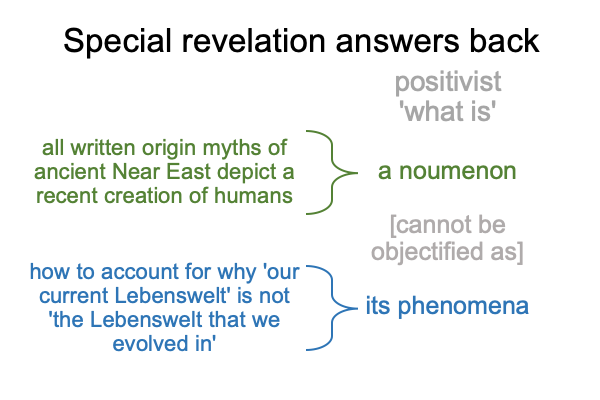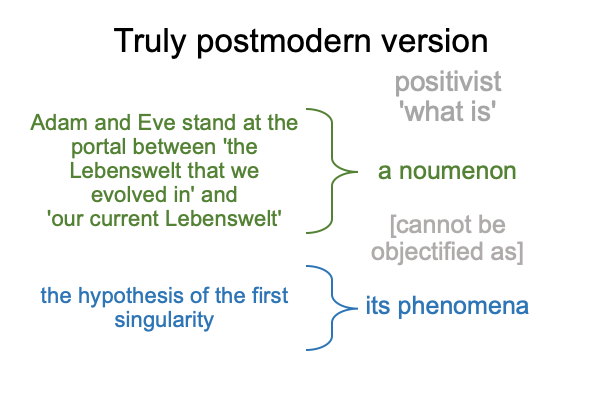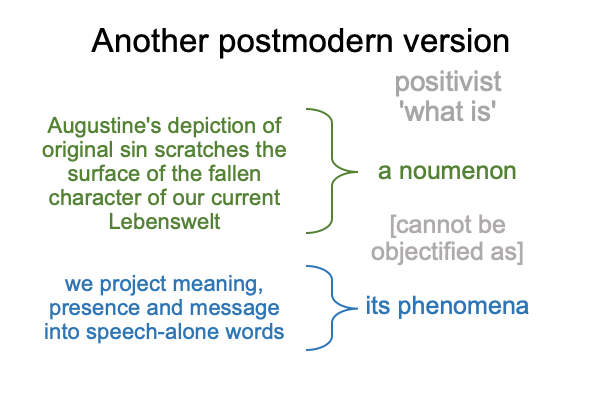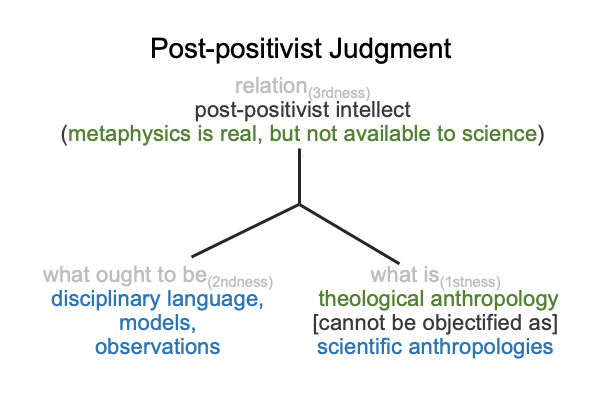Looking at Jeff Hardin’s Essay (2019) “Biology and Theological Anthropology” (Part 5 of 15)
0026 The unsettling end to the prior blog shows where Jeff Hardin’s discussion can go.
Hardin poses one question. A second question mirrors the first. The transit from one question to the other turns everything backwards. One question reflects phenomena onto their noumenon. The other reflects a noumenon onto its phenomena.
Scientists study phenomena. Their data makes sleepiness great.
Humans pay attention to noumena. Our attentiveness is likely innate.
0027 We want to hear a narrative about the thing itself. Forget about the empirio-schematic judgments about its phenomena.
Evolution, as a forensic science, offers a data-driven narrative. But, it’s really a projection of models onto the thing itself. So, the story from phenomena inherently violates the dyad of what is in the Positivist’s judgment.
So, it will never satisfy. It will never offer me a way to appreciate who I am.
0028 I am a tarnished image of God.
The Bible offers a narrative, which many call “special revelation”. Special revelation captures our attention. Reading the words bring us into awareness of the thing itself.
0029 Hardin offers the following picture.

Hardin argues that the narratives of the evolutionary sciences provide constraints on interpretations of what it is to be human from Genesis.
0030 The following is a particularly important application.
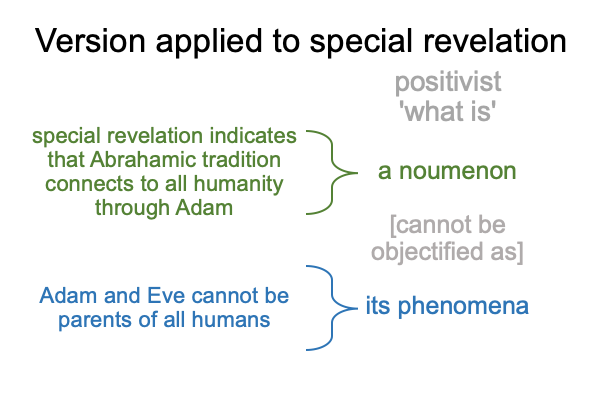
0031 In the next blog, I will look at the same argument in the mirror within the heart of Hardin’s essay.

